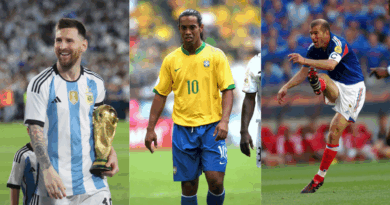Michael Jordan’s quiet summer after a painful playoff exit
A different kind of offseason
The summer of 1989 arrived with mixed feelings for Jordan. According to past reporting from the Chicago Tribune, he had just completed one of his most productive all around seasons, leading the league in scoring while expanding his playmaking responsibilities.
But a stubborn groin injury limited him late in the year, and Chicago’s playoff push ended once again at the hands of the Detroit Pistons.
At a time when NBA stars often tried to outwork the disappointment, Jordan surprised some people around the team by moving in the opposite direction. He stepped away from the gym, slowed his schedule and focused on letting his body settle.
Time away from basketball
Jordan later explained to the Tribune that he gave himself permission to decompress. “I ate and drank all summer and played basketball only about four times and I gained about two pounds,” he said.
Read also: Gerwyn Price predicts rising stars at the World Darts Championship
He spent most of his days outside rather than on a practice floor, a shift that reflected a broader effort to reset both physically and mentally.
This was still the era before year round personal trainers and individualized sports science programs, meaning players often had to develop their own sense of recovery. For Jordan, that meant pulling back instead of pushing harder.
Long stretches on the course
Much of Jordan’s summer unfolded on golf courses across the Southeast. “I averaged about 36 holes per day,” he said in 1989. “I just finished up playing five days in Hilton Head. Got my handicap down to about a five this summer.”
Golf had long been one of Jordan’s preferred outlets, but during that summer it functioned as both a hobby and a manageable form of movement. It allowed him to stay active without aggravating the groin injury that had disrupted the Bulls’ playoff run.
Read also: Real Madrid consider summer reshuffle in attack
Trainers saw progress, even in the slowdown
Bulls trainer Mark Pfeil told the Tribune that the injured groin had technically healed but had stiffened because Jordan wasn’t playing much basketball.
“It’s just that it’s stiff now because he hasn’t played much basketball,” Pfeil said, noting that they were paying more attention to Jordan’s back than his groin by late summer.
Despite concerns about inactivity, the reduced workload ultimately benefitted him. The break gave his body time to reset after several seasons of heavy usage, including deep playoff runs and international competition.
Return to full strength
When the 1989,90 season began, Jordan was not only cleared but able to play in all 82 regular season games. He again led the league in scoring and steals, and Chicago pushed Detroit to a decisive seventh game in the conference finals.
Read also: A month of drama: Football’s most unforgettable moments in November
The year also marked a turning point in how Jordan managed his physical load. His approach influenced younger players, including Kobe Bryant, who later described learning how Jordan adapted during demanding stretches.
Bryant recalled Jordan telling him that certain nights required shifting positions or working closer to the basket to conserve energy while staying effective.
A model for longevity
Jordan’s decision to prioritize healing over nonstop training was unusual in that era, but it helped shape the longer arc of his career.
Apart from the foot injury that sidelined him in his second season, he remained one of the league’s most durable stars. His blend of aggression, discipline and strategic rest would later become a blueprint for modern athletes balancing high workloads with long term sustainability.
Read also: Kane weighs future as Bayern seek clarity before January window
Sources
Chicago Tribune, NBA historical records
Read also: Driver who injured more than 130 in Liverpool parade crash pleads guilty




